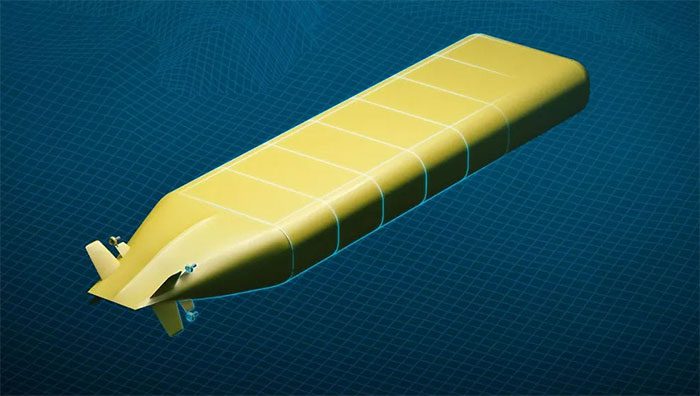A German project team led by ThyssenKrupp Marine Systems is developing the largest unmanned submarine in the world. A prototype will soon undergo test dives to demonstrate the performance and versatility of this vehicle.

A German project team led by ThyssenKrupp Marine Systems is developing the largest unmanned submarine in the world. (Image: newsout.co.uk).
According to reporters in Germany, over a year ago, the second phase of the Modifiable Underwater Mothership (MUM), funded by the Federal Ministry of Economics, was launched in Kiel, Northern Germany. This device operates underwater without a crew, has a modular structure, and can undertake various missions in the civil sector to explore the world’s oceans.
The research team is preparing to implement two subsequent phases for the 25-meter long submarine for testing dives. According to Naval News, this will be the largest unmanned submarine in the world to date.
Joining the project alongside ThyssenKrupp Marine Systems are companies such as Atlas Elektronik and Evo Logistics, as well as the University of Rostock and the Technical University (TU) of Berlin. The project’s goal is to establish a new standard for underwater operations of unmanned vehicles by early 2025.
To achieve the set goals, the submarine is designed in a modular style, where the modules can connect within the hull to perform different missions under various conditions. These modules are approximately the size of 3 – 6 meter containers.
This unmanned submarine differs from similar types in that it is designed to surround the internal containers, rather than fitting tightly with them as seen in some other unmanned submarines currently in production. The hull is designed to be long and flat, with a width greater than its height, thus improving the stability of the submarine when surfaced. As the submarine can operate underwater regardless of weather conditions, it can be deployed year-round.
The submarine moves using two propulsion devices designed opposite each other at the rear of the vessel, featuring a fuel cell engine that allows the submarine not only to operate independently for extended periods but also to be environmentally friendly, especially in ecologically sensitive waters. The engine has a power output of 80 kW and is supported by a maximum load with a Lithium-Ion battery module.
According to plans, from mid-2024, the submarine will undertake application-based operations. The planned deployment area includes offshore wind farm installations, deep-sea extraction, and research. The submarine can undertake transportation missions, explore oil and gas fields, conduct core sampling at the seabed, or deploy exploration equipment. Moreover, in the future, the submarine may also carry out monitoring and inspection of underwater cables. Although this is a civil project, military interest in it is also significant.


















































